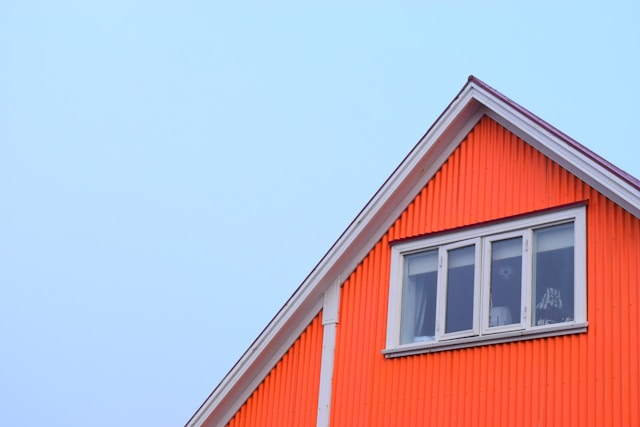
Owning a home is a significant investment, and like any investment, it requires ongoing care and attention. Long-term planning for home maintenance and repairs is essential for preserving the value of your property and avoiding costly issues down the line. By being proactive, you can maintain the safety, functionality, and aesthetic appeal of your home. Here’s how to develop a plan that covers all the key areas of your home’s maintenance needs.
Regular Inspections and Preventative Maintenance
The foundation of any long-term home maintenance plan is regular inspections and preventative maintenance. These activities help you catch potential problems early before they develop into more significant issues. Regular inspections should cover critical systems of the home, such as plumbing, electrical, and HVAC (heating, ventilation, and air conditioning). By routinely checking these systems, you can identify any wear and tear or malfunctions that need attention.
Preventative maintenance is equally important. Simple tasks like cleaning the gutters, changing air filters, and servicing your HVAC system can go a long way in extending the life of these components. For instance, clogged gutters can lead to water damage if not cleaned regularly, and a neglected HVAC system can result in poor air quality and higher energy bills. Incorporating these tasks into your yearly maintenance routine helps keep your home running smoothly and reduces the risk of unexpected repairs.
Roof Maintenance and Replacement
One of the most critical aspects of home maintenance is taking care of the roof. The roof is your home’s first line of defense against the elements, and neglecting it can lead to serious problems, such as water leaks and structural damage.
If your roof is showing signs of aging or damage, it might be time to consider a replacement. This is where a roof replacement contractor comes in. Consulting with a professional contractor can help you assess the condition of your roof and determine the best course of action. A well-timed roof replacement can prevent extensive interior damage and maintain your home’s energy efficiency by improving insulation and ventilation.
It’s important to include roof maintenance and potential replacements in your long-term home care plan. This helps protect your home and preserves its value over time. Regularly updating or replacing your roof makes sure that your home remains secure and energy-efficient, which can be a significant selling point if you ever decide to put your property on the market.
Managing Exterior Repairs
In addition to maintaining the roof, it’s essential to pay attention to the exterior elements of your home, such as siding, windows, and doors. These components are exposed to the elements year-round and can deteriorate over time. Regular maintenance, like repainting or sealing, can protect these surfaces from moisture, pests, and other environmental factors that cause damage.
For instance, wood siding may need to be repainted every few years to protect it from moisture, while vinyl siding may require periodic cleaning to prevent mold and mildew growth. Windows and doors, particularly those made of wood, should be checked for signs of rot or warping, which can compromise their effectiveness in keeping your home insulated and secure.
Setting aside time and budget for these exterior repairs is crucial, especially after severe weather events such as storms or high winds. These events can cause significant damage, and addressing issues promptly can prevent them from worsening. Including these tasks in your long-term maintenance plan helps keep your home’s exterior in good shape, contributing to its overall durability and appearance.
Planning for Major System Upgrades
As part of your long-term home maintenance plan, it’s important to anticipate the need for major system upgrades. Systems like the furnace, water heater, electrical panel, and plumbing fixtures all have limited lifespans. Knowing when these systems are likely to require replacement allows you to plan financially and avoid unexpected disruptions.
When replacing these systems, consider upgrading to more energy-efficient models. Newer systems are often more efficient, which can reduce your utility bills and increase your home’s overall energy performance. This forward-thinking approach helps you manage costs and also contributes to the long-term sustainability of your home.
Budgeting for Unexpected Repairs
Even with the best maintenance plan, unexpected repairs can still occur. Whether it’s a burst pipe, a broken appliance, or unexpected damage from a storm, having a financial buffer set aside for these situations can ease the stress of dealing with unplanned repairs.
A good rule of thumb is to set aside 1% to 3% of your home’s value annually for maintenance and repairs. This fund can cover both routine maintenance and unexpected issues that arise. By consistently contributing to this fund, you can build up a reserve that will be available when you need it most.
Having a budget for unexpected repairs is particularly important as your home ages. Older homes are more likely to experience issues due to wear and tear, so having funds available to address these problems quickly can prevent small issues from becoming larger, more expensive ones.
Keeping Records of Maintenance and Repairs
Maintaining detailed records of all the maintenance and repairs performed on your home is an essential part of a long-term maintenance plan. These records help you keep track of what’s been done, when it was done, and what might need attention in the future.
For example, knowing the last time your roof was inspected or when your HVAC system was serviced can help you schedule future maintenance and avoid overlapping or missing necessary tasks. Keeping receipts, warranties, and contractor information in one place also makes it easier to manage your home’s upkeep.
In addition to helping with maintenance planning, these records can be valuable if you decide to sell your home. Potential buyers will appreciate seeing a well-documented history of maintenance and repairs, which can increase their confidence in the home’s condition and potentially lead to a smoother sale process.
Long-term planning for home maintenance and repairs is key to protecting your investment and maintaining the value and comfort of your home. By focusing on regular inspections, exterior maintenance, system upgrades, budgeting for unexpected repairs, and keeping detailed records, you can make sure that your home remains in good condition for years to come. Taking a proactive approach to home care saves money in the long run and also enhances your living environment, making your home a safe and enjoyable place to live.



